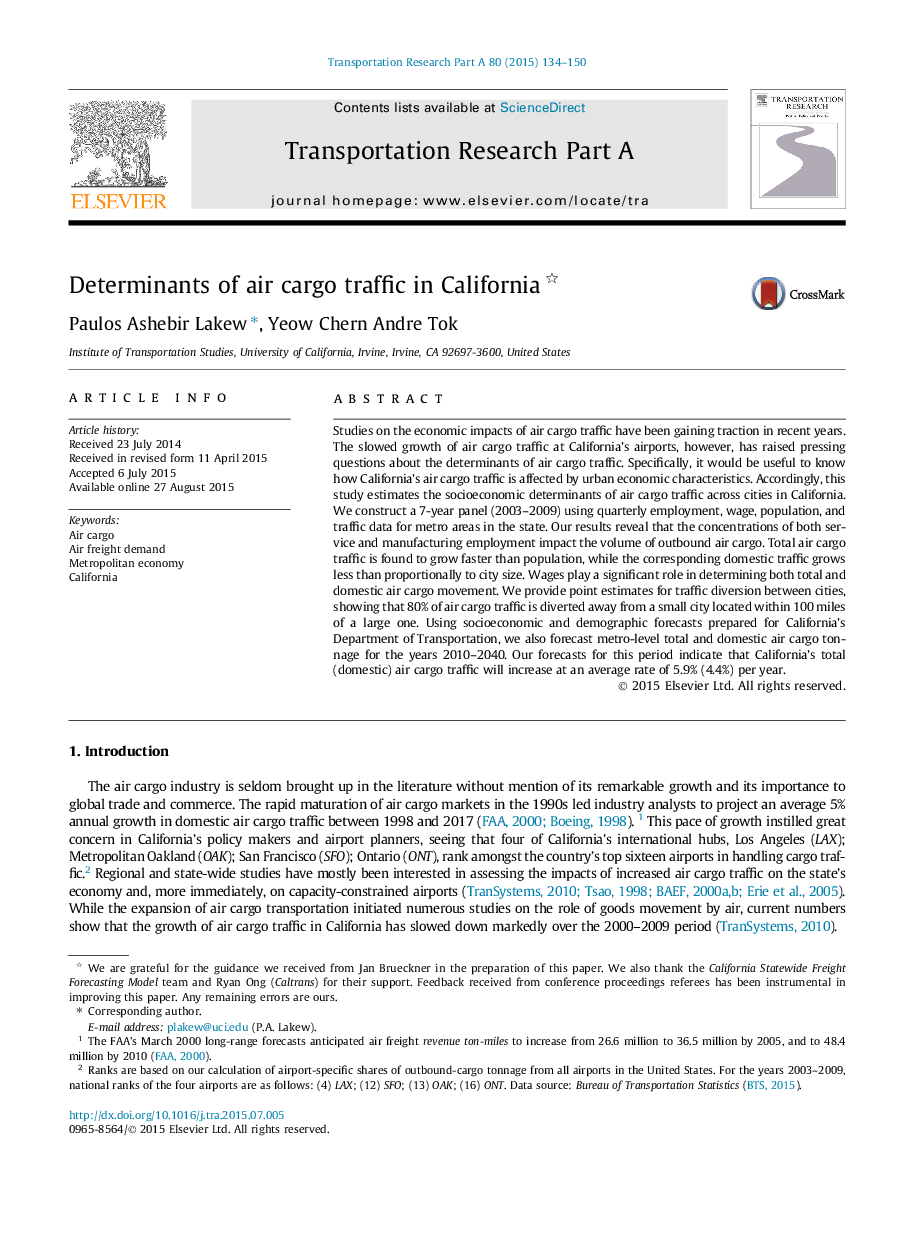| Article ID | Journal | Published Year | Pages | File Type |
|---|---|---|---|---|
| 6781168 | Transportation Research Part A: Policy and Practice | 2015 | 17 Pages |
Abstract
Studies on the economic impacts of air cargo traffic have been gaining traction in recent years. The slowed growth of air cargo traffic at California's airports, however, has raised pressing questions about the determinants of air cargo traffic. Specifically, it would be useful to know how California's air cargo traffic is affected by urban economic characteristics. Accordingly, this study estimates the socioeconomic determinants of air cargo traffic across cities in California. We construct a 7-year panel (2003-2009) using quarterly employment, wage, population, and traffic data for metro areas in the state. Our results reveal that the concentrations of both service and manufacturing employment impact the volume of outbound air cargo. Total air cargo traffic is found to grow faster than population, while the corresponding domestic traffic grows less than proportionally to city size. Wages play a significant role in determining both total and domestic air cargo movement. We provide point estimates for traffic diversion between cities, showing that 80% of air cargo traffic is diverted away from a small city located within 100 miles of a large one. Using socioeconomic and demographic forecasts prepared for California's Department of Transportation, we also forecast metro-level total and domestic air cargo tonnage for the years 2010-2040. Our forecasts for this period indicate that California's total (domestic) air cargo traffic will increase at an average rate of 5.9% (4.4%) per year.
Keywords
Related Topics
Physical Sciences and Engineering
Engineering
Civil and Structural Engineering
Authors
Paulos Ashebir Lakew, Yeow Chern Andre Tok,
